SVT Temple, Helensburgh, Brahmotsavam 2014 - Day 1 to Day 10
Day 1 - Dwaja-arohanam (flag hoisting festival) signifies formal invitation to all devathas (Indra, Varuna, Agni, Vaayu, Kubera etc) to attend the brahmotsavam. Once the Garuda dwaja (Garuda flag) is raised on the Dwaja-stambam (flag post) the brahmotsavam has officially started.
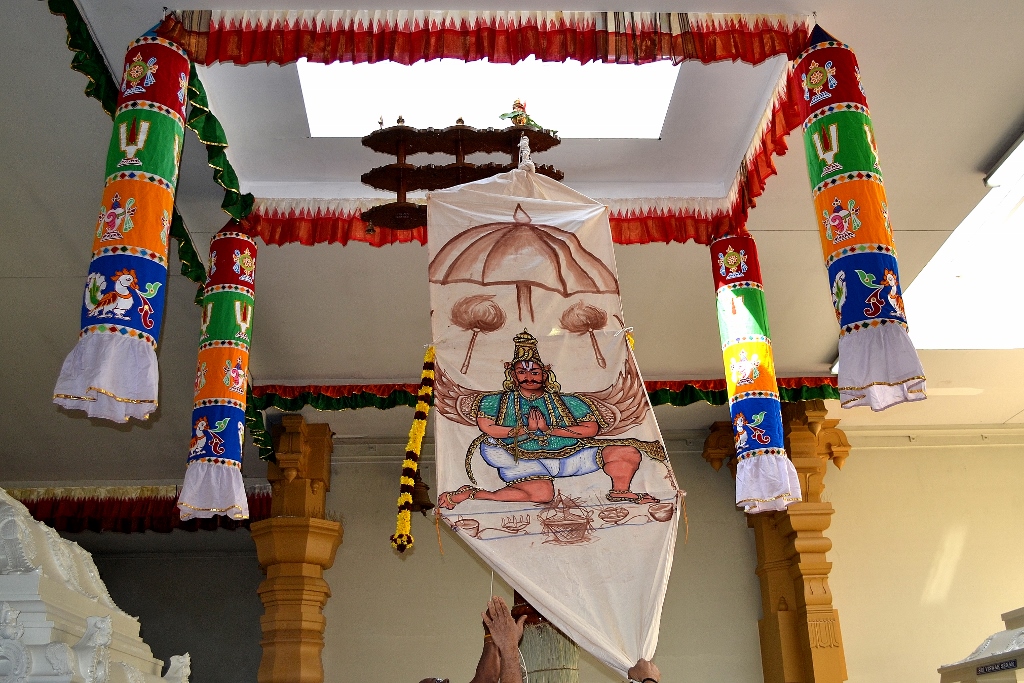
Day 1 (pm) - Sesha Vaahanam - Perumal along with His consorts (Sridevi and Bhudevi) are taken procession on a seven headed Aadiseshan. He is one of the nitya-suri of perumal. Aadi means from time immemorial (primeval) and seshan means devoted servant, thus Aadiseshan is always at His service. Perumal reclines on Aadi-sesha in paarkadal and also in many divya desams.
This vaahana manifest (thirukolam) represents that we are all His sole servants (ananyaarha-seshaboothan) and He is the ultimate master (seshi). The fourth name in Sri Vishnu Sahasranaamam "Bhoota Bhavya Bhavat Prabhu:" describes that He is the ultimate Prabhu (Swami) of past, present and future things and thereby signifies His "Swamitvam".
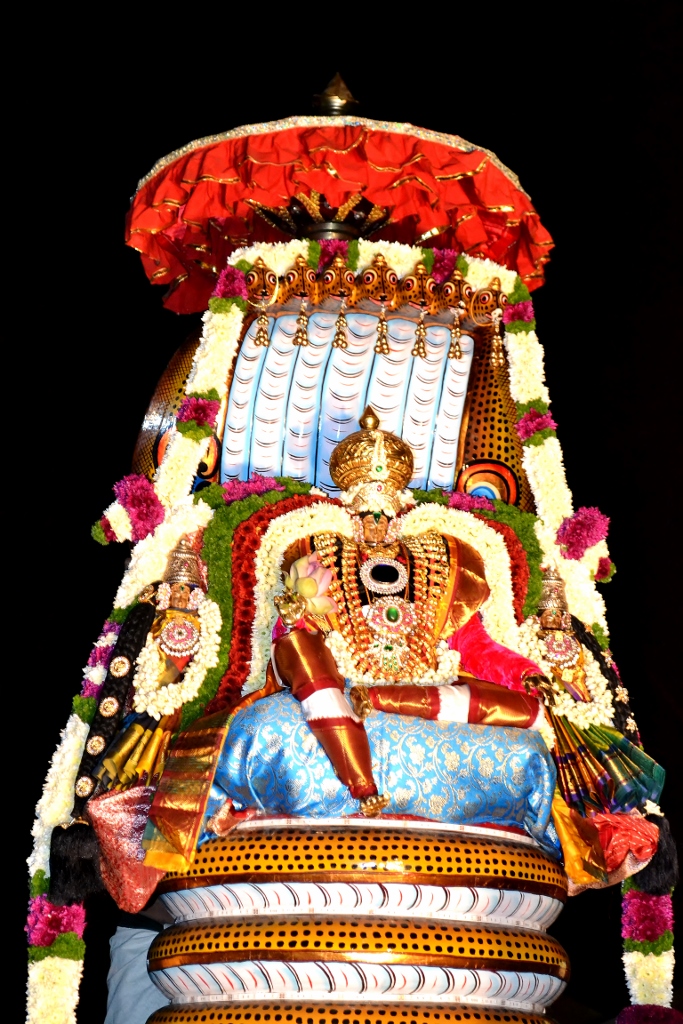
Day 2 - Hamsa Vaahanam - Perumal adorning a white coloured dress and is taken procession on white hamsa (swan). Hamsa represents purity and intellectuality and white is the symbolic colour for satva guna. This manifest (thirukolam) symbolically represents His purity (suddha satvam). Sri Vishnu Sahasranaamam describes Him as avikaaraya "suddhaya" nityaaya paramaatmane and signifies His "Suddha Satvamayatvam" and also His "Sarvagnyatvam".

Day 3 - Muthu Pandal Vaahanam - Perumal along with His two consorts taken procession on a enclosure (pandal) embedded and decorated with string of pearls. Pearl is a symbolic represention of grand, majestic and royalness. This vaahana manifest (thirukolam) represents His "Sarvaloka Mahesvarathvam".
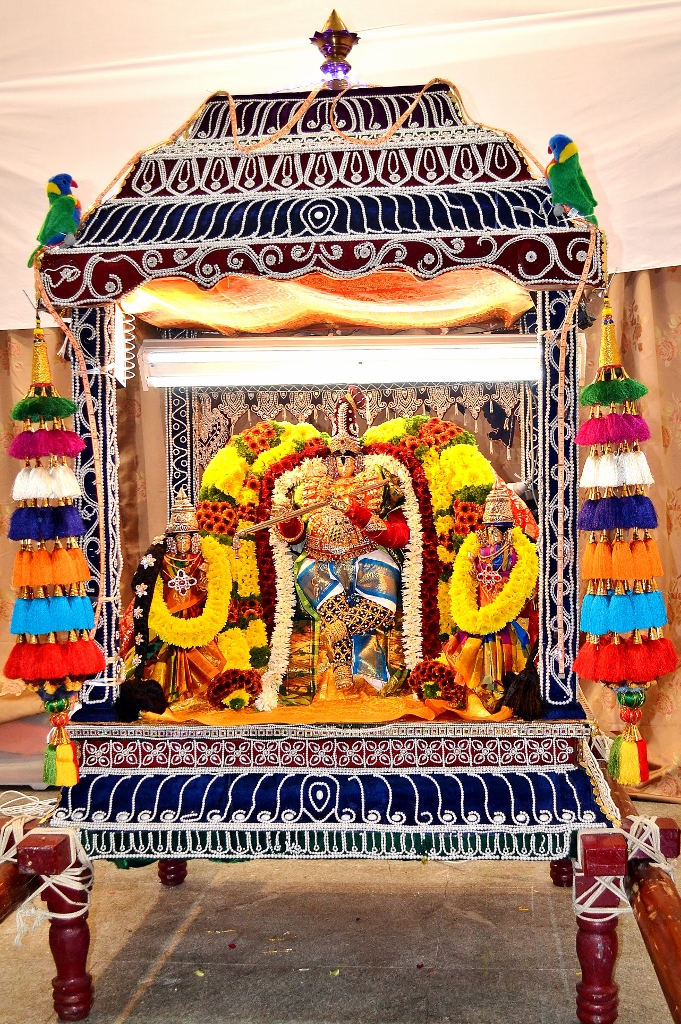
Day 4 - Sarva Boopala Vaahanam - Perumal is taken procession along with His consorts. This vaahana manifest (thirukolam) signifies that His supremacy as the Lord of lords. Sri Vishnu Sahasranaamam describes Him as "jagatprabhum devadevam" which represents His "parathvam".
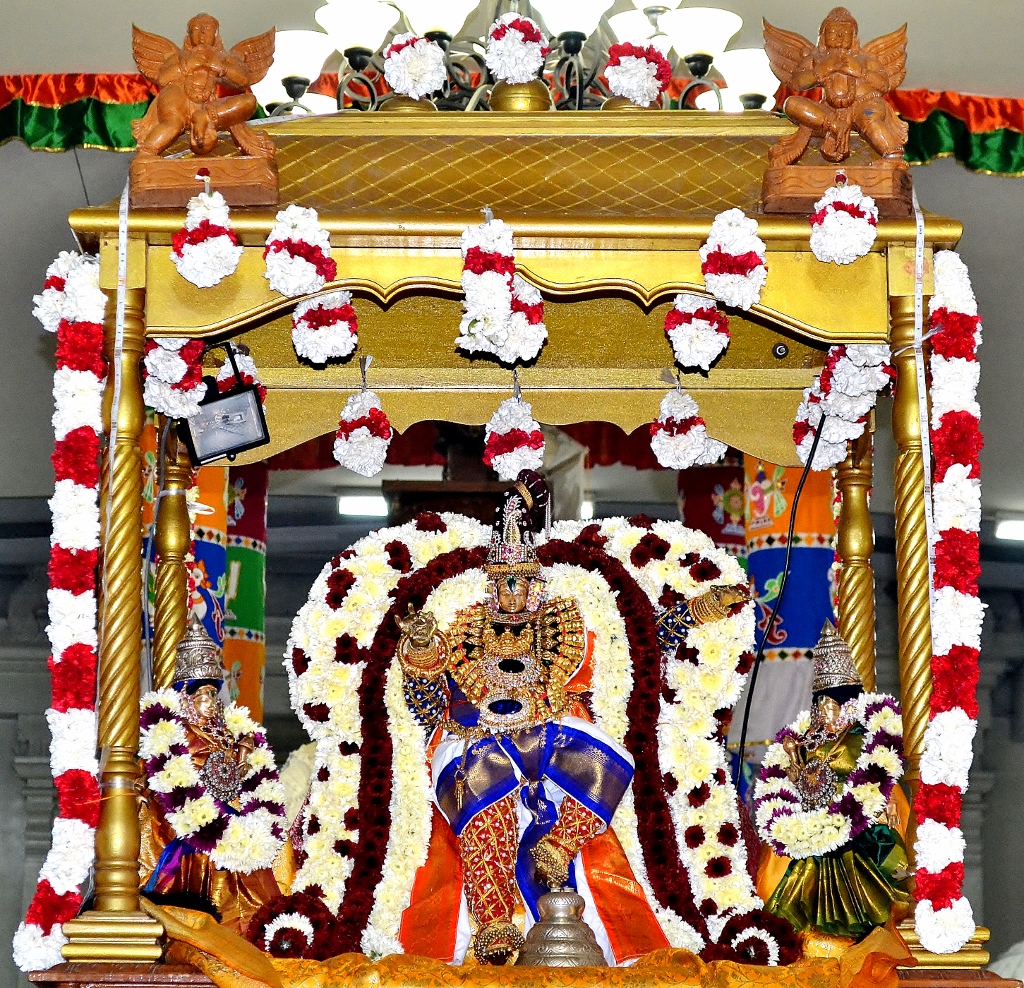
Day 5 - Garuda Vaahanam - Garuda is the chief vahana (vehicle) for Perumal. Garuda is also called "Peria Thiruvadi". Perumal is taken procession in His chief vehicle. This manifest signifies that He comes rushing on this vaahana as a saviour to remove the ill effects of samsara-papa (anishta nivruthi) and gives moksha (ista praapthi) for those who surrender to Him - like He did during Gajendramoksham.
Sarvadharman parityajya mamekam saranam vraja;
Aham tva sarva papebhyo mokshayishyami ma suchah.
The Lord Himself confirms this in Bhagavath Gita, thus highlighting His "moksha pradatvam".
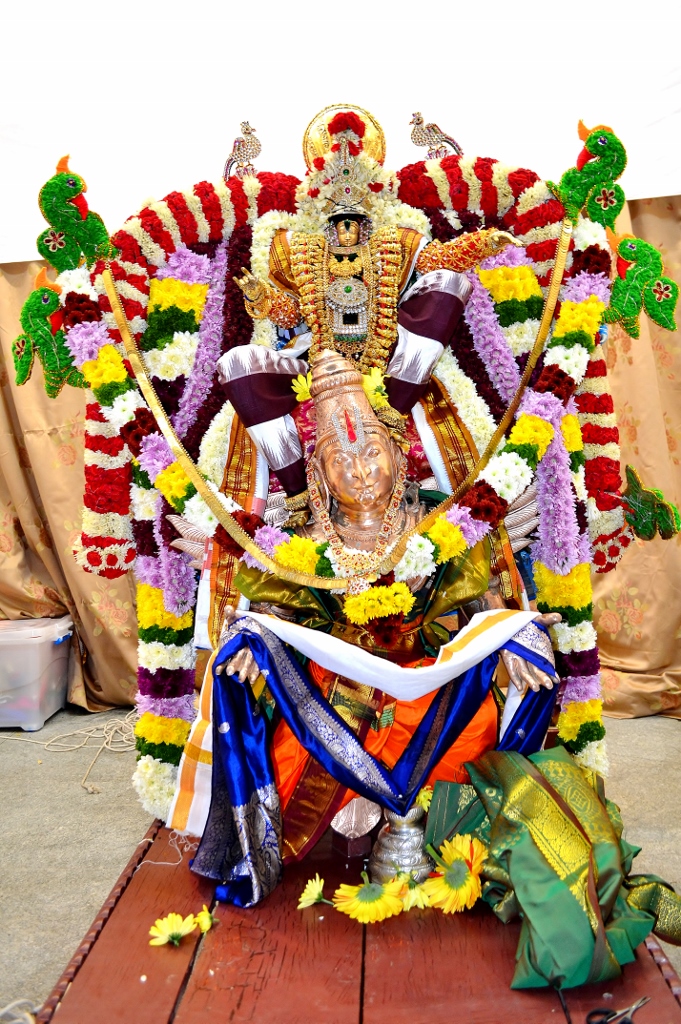
Day 6 (am) - Hanumantha Vaahanam - Hanuman is known for his selfless service and devotion to the Lord during Ramavatharam. Here Perumal (as Rama) with bow and arrow taken procession on Hanuman. This manifest signifies that He is to be taken as refuge only once and He will remove all fears of samsara.
Sakrudeva prapannaya tavasmeeti cha yachate;
Abhayam sarva bhutebhyo dadam yetad vratam mama.
The Lord Himself takes this as a vow in Srimath Ramayanam, thus highlighting His "sharanyathvam".
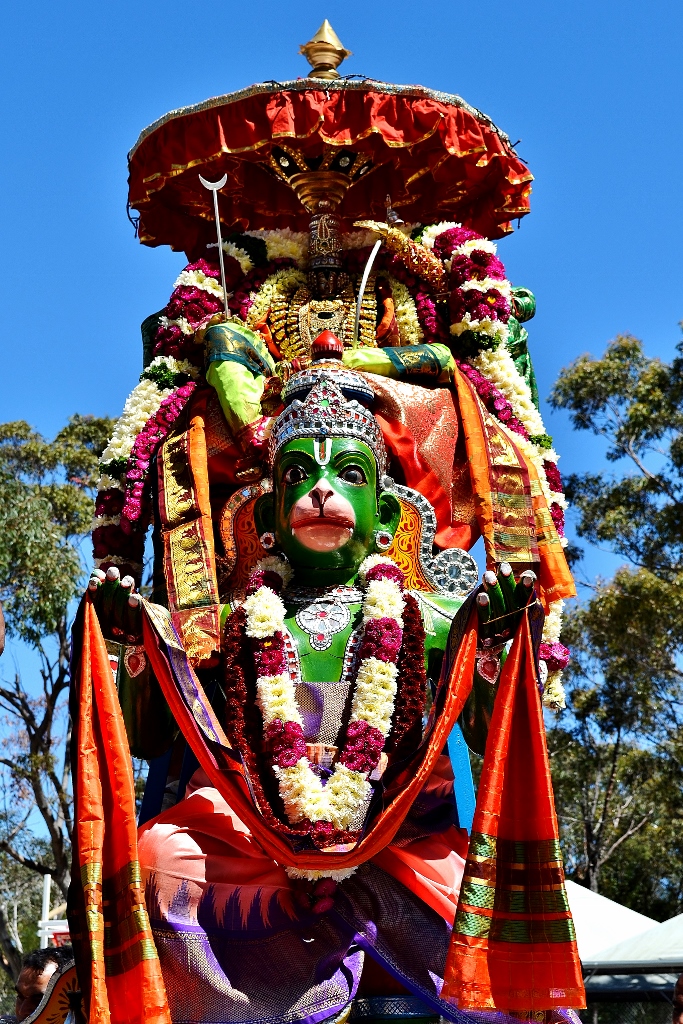
Day 6 (pm) - Gaja Vaahanam. Gaja (elephant) is not only known for its might, valour and strength, but also
commands a special place being the celestial vehicle for Sri Mahalakshmi. To bless the devotees the Lord takes procession on elephant and also pleases His consort by exchanging garlands with Sri Mahalakshmi after the procession to emphasise His "shirayapathitvam".
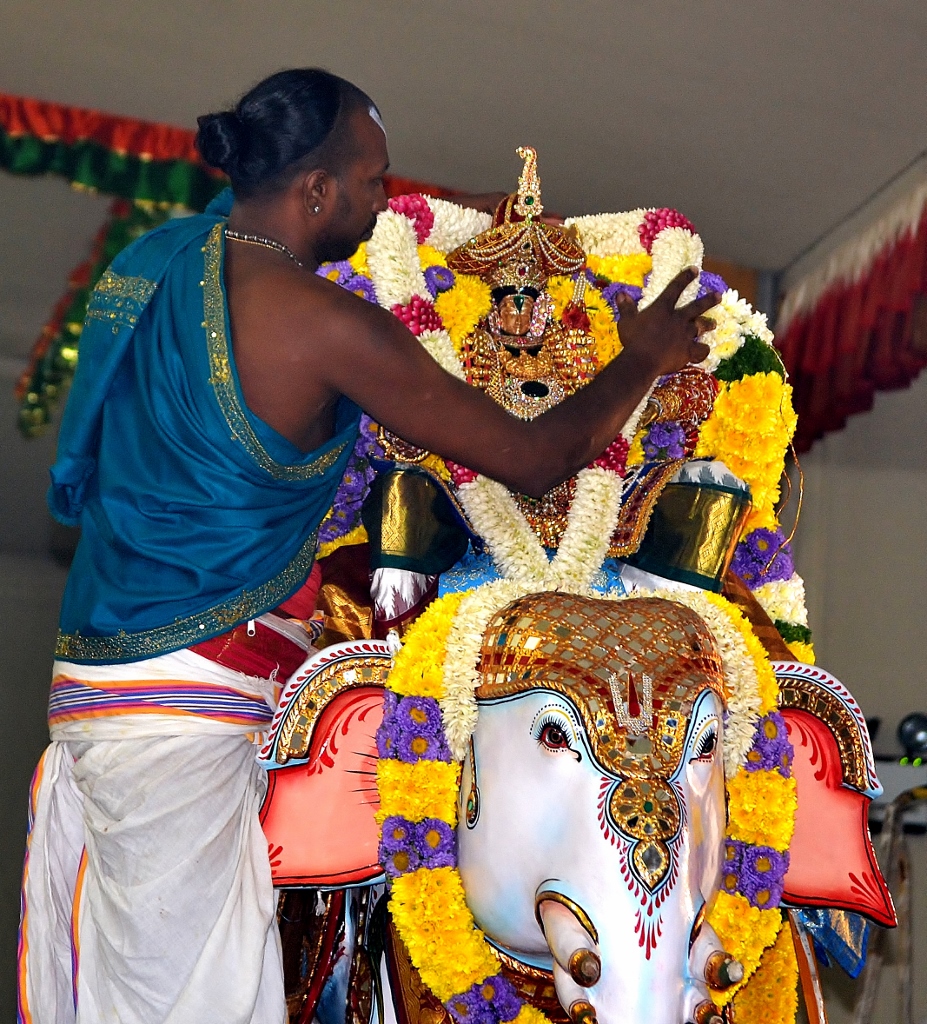
Day 7(am) - Choorna Utsavam - Sprinkling of turmeric powder on the moola and utsava murthis. Turmeric represents holiness and sacredness (mangalam) and Choorna utsavam is symbolically emphasises that perumal is sacred than all the sacred things in the world. Sri Vishnu Sahasranaamam describes Him as "mangalaanaam cha mangalam".
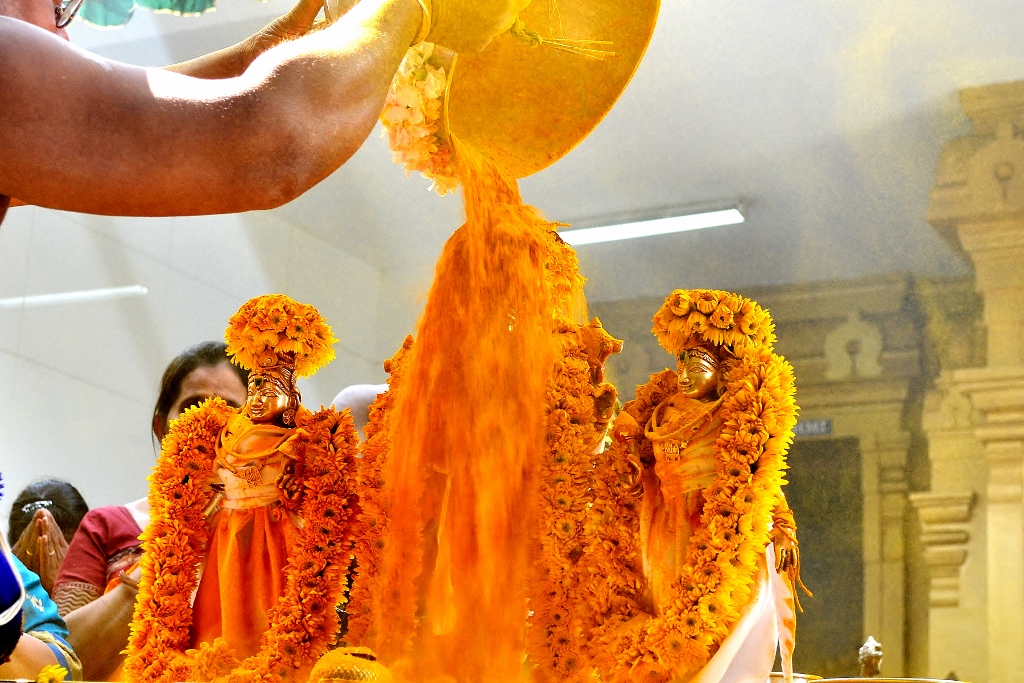
Day 7 (pm) - Surya Prabhai Vaahanam - Perumal is taken procession along with His consorts on Lord Sun driving the chariots.
In Bhagavath Gita, Lord says "adityanam aham vishnur" meaning "Of the Adityas I am Vishnu and "dyeya sada savithru mandala
madhya varthi Narayana.." meaning worship the perumal who resides in the midst of stellar objects and surrender unto Him.
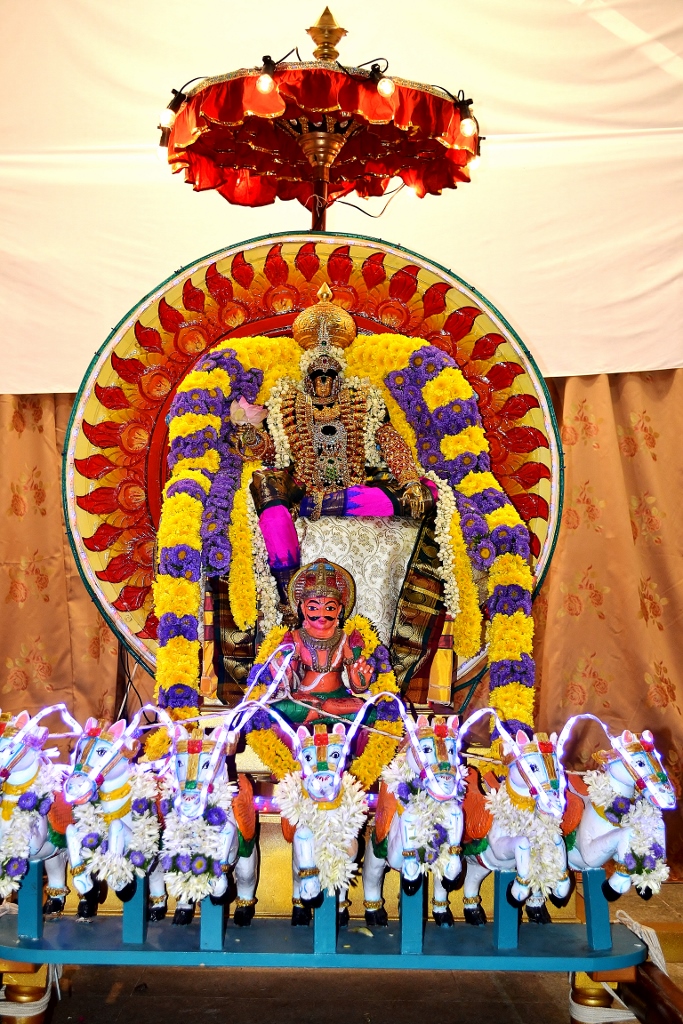
Day 8 - Ashwa Vaahanam. Perumal is taken procession riding a horse which symbolically represent the forthcoming kalki avatara,
fighting against the evil (virodha nirasanathvam) and to protects the dharmic sadhus as said in the Bhagavath Gita.
"Paritranaya sadhunam vinasaya ca duskrtam
dharma-samsthapanarthaya sambhavami yuge yuge".
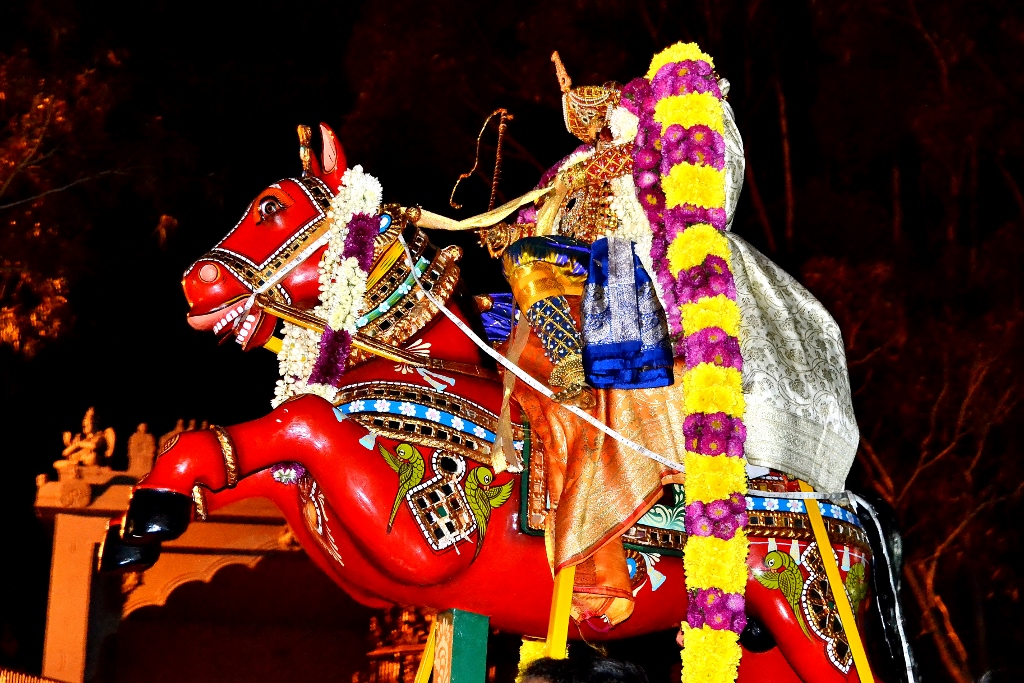
Day 9 - Rathothsavam. Utsava means celebration or any joyous occasion. Perumal along with His consorts mounts on a chariot (ratham) and pulled by thousands of devotees and it is believed that one who witnesses this and knows his divine nature will not be reborn in this samsara again, as described in Bhagavath Gita.
"Janma karma ca me divyam evam yo vetti tattvatah
tyaktva deham punar janma naiti mam eti so 'rjuna".
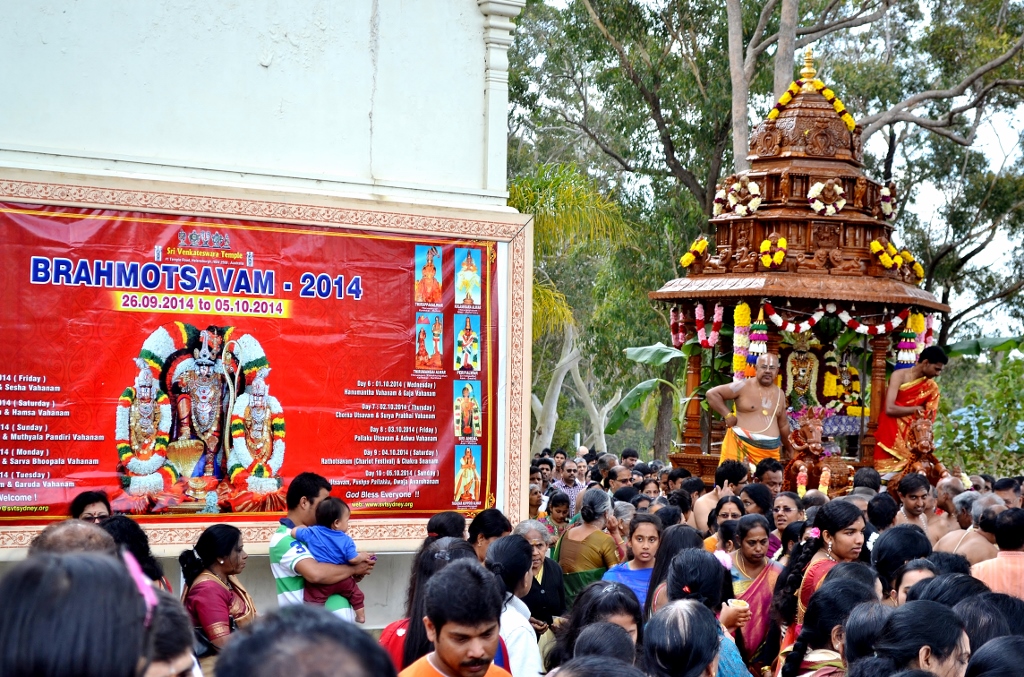
Day 9 - Chakra Snanam - Immersion of Sri Chakrathalwar in the holy water (theerthavari) which is symbolic representation of getting oneself absolved from all sins.
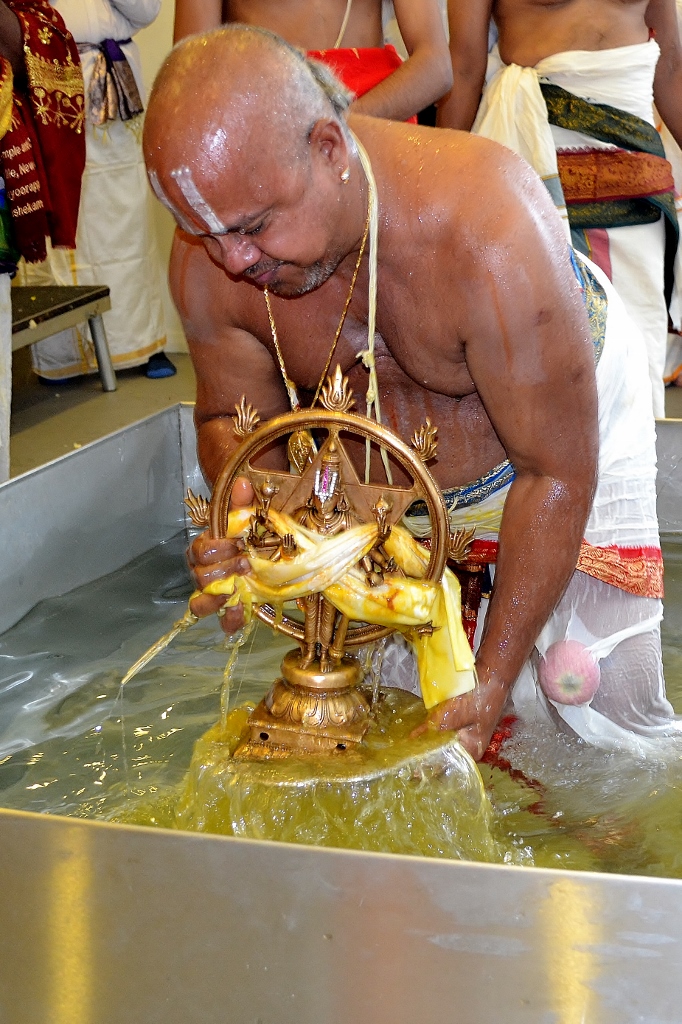
Day 10 - Dwaja avarohanam - Lowering the garuda dwaja (garuda flag) after farewelling all the devathas (Indra, Varuna, Agni, Vaayu, Kubera etc) and marks the completion of the ten day brahmotsavam festival.
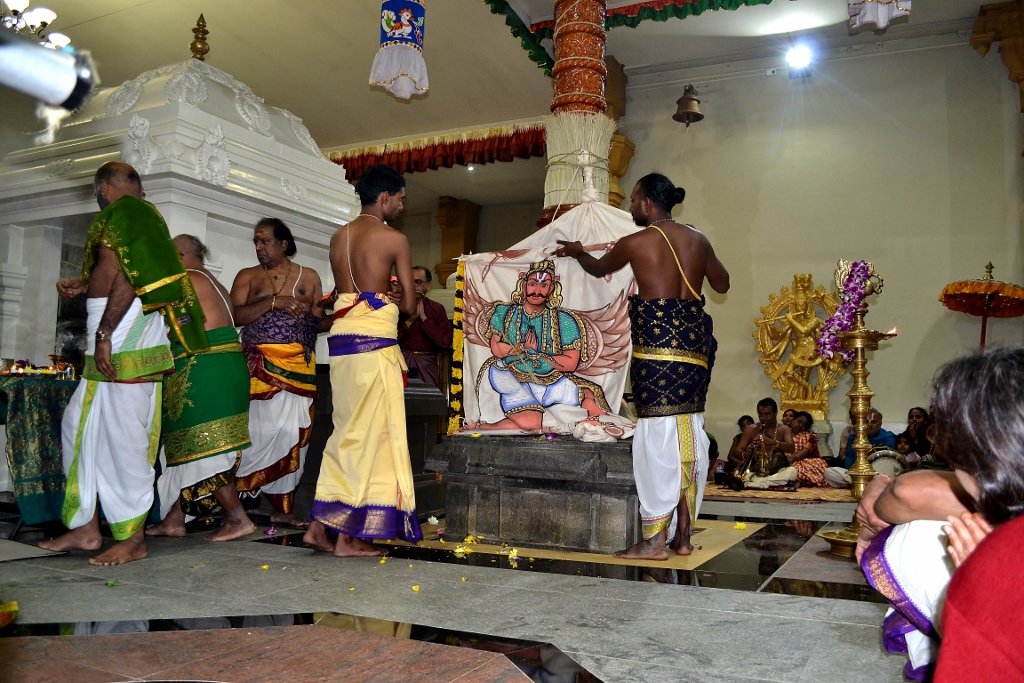
My sincere thanks to SVT committee members, temple priests and all other well wishers who helped me during the ten days in doing this service (kainkaryam).
Ramesh Raghuraman.


